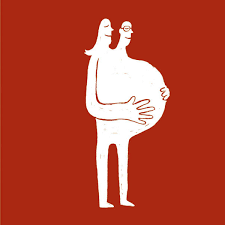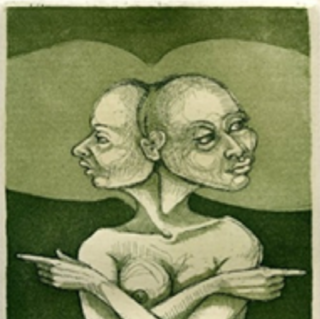Sex
ART Attack
Attitudes toward assistive reproductive technologies in Ireland
Posted September 13, 2018
“Want to have a child? Well don't do it too early. Don't leave it too late. Don't do it before you're nicely settled. Don't have an abortion. Don't have an unwanted child. Don't be a single parent. Don't miss out on the joy of childbirth. Don't think you can do it alone. Don't let your children be reared by strangers. Don't sponge off the State. Don't have a child for selfish reasons. Don't be childless for selfish reasons. Don't end up in barren solitude. Don't expect fertility treatment to work.”
(A. Bennett, 1996 – ‘Leading Article’ The Guardian)
Oh, brave new world...
New technologies present new ethical dilemmas. Sometimes our ethical intuitions can lead us up garden paths and we need some time to reflect maturely on this new world we have made for ourselves. This is easy to see in the case of things like GMOs, nuclear power, and antibiotics. All of these have created new problems or led people’s intuitions to places they were never designed to evaluate. This is also true in the case of Assistive Reproductive Technologies (ART). We now have technologies where, not only can conception occur outside of human bodies, but embryos can be frozen, to be thawed at a more propitious time—almost like some sci-fi visitor to a future utopia. How are we making sense of these new opportunities?
Ireland is an interesting place to study these things because the use of ART has been pretty much unregulated up until now (although this is changing) and the use of ART in the decade between 1999 and 2008 increased by 265% here. So—we constructed (what we think is) the first up-to-date survey of attitudes to ART in the country. We asked people for factual knowledge about the new technologies, and then a bunch of moral and ethical questions about it. Things like
How natural people felt it was,
Was it “playing god”?
Does ART unfairly take resources from other healthcare services?
What did people feel about the medical intrusions?
Was it messing with fate?
We validated these answers against some self-description questions regarding personal thoughts about ART use, and things seemed robust enough to move forward.
It was a large enough response (n=611) and with a decent range of ages (18-78) and both sexes (albeit mostly—i.e. 78%--females) to extract some valid patterns. We got responses from a small number of self-identified transgendered people too. We took the data and looked for patterns of responses. Tentatively we came up with five types of attitude:
-
“Worried yet willing”

These people expressed a number of concerns about ART (e.g. "It's expensive", or "it might be painful") but were overall pretty likely to agree to thinking about using it in their own lives.
They were typically at an age where questions of fertility were starting to become salient too (mean age 28.7). They were the largest group (31.4%).
They tended to have the highest scores on factual knowledge about ART.
2. “Live and Let Live”

21.3% fell into this category. We called them the "live and let live" group because these people were characterized by having low scores on condemning others’ use of ART.
They were also likely to consider using it themselves. They also tended to be younger (mean age 19.2).
They tended to have lower scores about factual knowledge of ART
3) “Disengaged”

This group—only 10% of the total—hadn’t really thought too much about the issues and cared even less.
Unsurprisingly, this group is where most of the men ended up. Their scores were low in every area.
Their factual knowledge of the details of ART was the lowest of the groups.
4) “Judgmental”

These people were as young as the “live and let-livers” but had far more condemnatory attitudes.
They were more likely to view ART as "unnatural" or somehow "playing god".
Follow-up analysis is going to explore the reasons for this. 25% fell into this category.
Their factual knowledge of ART tended towards the middle.
5) “Conflicted”

This group was the oldest of the lot (average age 31.1 years) and they had mixed feelings about ART.
They tended to be reasonably well-informed about the details.
They comprised 11.6% of the total and were likely to endorse both positive ("I will likely consider using ART") and negative ("I'm worried about the long-term consequences") implications.
Take Home Message
Overall, most people were positive about the opportunities for ART, and there was less condemnation of its potentials than might have been expected. Factual knowledge about ART was not huge, however. Of course--this is the first generation that is being offered these options and these things may change with time.
If people are to use ART then they would be well-advised to start early. For example--to be most effective, egg-freezing has to be done while still comparatively young. Thus it is slightly concerning that the youngest were also the least informed about ART, in general.
Crucially, we hadn't asked people what they thought about their tax money funding others. That’s the next step.
Where to next?
We want to take this (tentative) typology of attitudes and see what it predicts about the offering of ART to marginalized populations. Do some people think offering ART to lesbian couples is something they are happy with? Do they think that women over a certain age have “brought it on themselves?” The paper for this is currently under review and we’ll report on that once it gets published. The current paper is available at the address below for anyone who wants more details. And, as always, I'm happy to correspond with anyone who wants to know more.
References
Dempsey, M., King, R., & Nagy, A. (2018). A pot of gold at the end of the rainbow? A spectrum of attitudes to assisted reproductive technologies in Ireland. Journal of reproductive and infant psychology, 36(1), 59-66. Available at https://www.tandfonline.com/doi/abs/10.1080/02646838.2017.1416334




